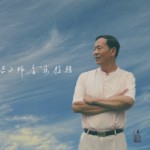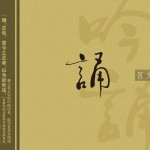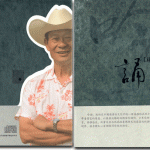The Application of Pan Gu Shengong in the Treatment of a Rare Genetic Disorder in Children
— Exploring Pan Gu Shengong II
by Ou, Wen Wei and Fraser, Paul
Arianna Gallagher was born on August 21, 2003. Her birth was difficult and so were the first days of her life. She was born blue with the cord wrapped twice around her neck. She had trouble “pinking up,” displaying normal coloration for a new-born baby, and continued to turn blue from the waist down each time she cried. On her second night of life, a heart murmur was detected. In the months to follow she continued to have other struggles: She wasn’t gaining weight, had reflux, and at eight weeks of age still hadn’t smiled. She had been seeing a few doctors, but hadn’t made much progress. None of the doctors could give an explanation, let alone a diagnosis, but all feared that Arianna might not be able to develop as a normal child.
In January of 2004, Michelle Gallagher, Arianna’s mother, decided to seek help from her acupuncturist and avid practitioner and teacher of Pangu Shengong, Paul Fraser. Paul explained to her the fundamental principles and theories of Pangu Shengong—- to absorb energy directly from the universe to improve every aspect of being human: physical vitality, mental acuity, emotional balance and spiritual well-being. He went on to explain that an infant’s Life Force is directly tied to that of the mother’s. He used PGSG to send energy to Arianna through Michelle. Afterwards he suggested that she learn PGSG and use PGSG healing techniques daily to help Arianna. When she got home that night Arianna smiled for the first time.
In May of 2004, Michelle followed Paul’s suggestion to bring Arianna to see Master Ou Wen Wei to have qigong healing sessions from him directly. After the healing session, Master Ou told Michelle: “Arianna’s problem is most likely caused by a genetic disorder. This is a problem from before her birth. Put another way: The Original Qi of Arianna’s Life Force is weak. Additionally, her difficult birth caused a functional obstruction in her lungs as well as a weakness in the left side of her brain. These issues prevent her from growing normally. However, if you could practice PGSG diligently, and give qi healings for Arianna daily, and continue to have some regular qi healing sessions from Paul, it will help Arianna’s condition improve.” Master Ou also suggested that Michelle get a modern medical diagnosis from a physician.
She went to a Pediatrician who showed concern about her development as she had been showing mild delays. Soon after she saw a cardiologist. The cardiologist suggested Arianna may have a genetic disorder. He based this on the type of heart murmur she has, developmental delays and her facial features. Two weeks later Arianna had a hernia that required surgery. She saw another cardiologist, a geneticist and a surgeon. They drew her blood and tested her for Williams Syndrome – a rare genetic disorder. The doctors said they would be surprised if the test came back positive, however, as her delays were so mild.
Arianna was diagnosed with Williams Syndrome in September of 2004. The Gallagher’s were shocked and devastated. But they also felt a sense of relief because now the past year made sense. More importantly, they saw hope —- for the last several months since Arianna began to get regular PGSG treatment, she made obvious progress: less sickness and pain, increased growth, a healthier complexion and she smiled more often.
Williams syndrome is a rare genetic condition (estimated to occur in 1/20,000 births) causing medical and developmental problems. First recognized as a distinct entity in 1961, it is present at birth, and affects males and females equally. It can occur in all ethnic groups and has been identified in countries throughout the world. Most young children with Williams syndrome are described as having similar facial features. These features are recognized as a small upturned nose, long philtrum (upper lip length), a wide mouth, full lips, small chin, and puffiness around the eyes. The majority of individuals with Williams syndrome have some type of heart or blood vessel problem. Typically, there is narrowing in the aorta or narrowing in the pulmonary arteries. Most children with Williams syndrome have a slightly lower birth-weight than their brothers or sisters. Slow weight gain, especially during the first several years of life, is also a common problem and many children are diagnosed with “failure to thrive.” Many infants and young children have feeding problems. These problems have been linked to low muscle tone, severe gag reflex, poor suck and swallow, tactile defensiveness, etc. There is often a slightly increased frequency of problems with kidney structure and function. Inguinal and umbilical hernias are more common in Williams syndrome than in the general population. Children with Williams syndrome often have more sensitive hearing than other children; certain frequencies or noise levels can be painful or startling. Young children with Williams syndrome often have low muscle tone and joint laxity. Most people with Williams syndrome have some degree of difficulty with intellectual development. Young children with Williams syndrome often experience developmental delays; milestones such as walking, talking and toilet training are often achieved somewhat later than with most children.
In the mid-November of 2004, Master Ou visited Boston area again. Michelle brought Arianna back to see him and had qigong treatment. She told him the diagnosis from the hospital. After the treatment, Master Ou said that he saw a significant improvement in Arriana’s condition and believes that with continued practice and treatment she could develop normally. He suggested that Michelle have Arianna receive distance healings from him once a week for three to five months.
From then to mid-January of 2005, Arianna was making progress both statistically and obviously. Michelle decided to stop the distance healings in order to observe and compare Arianna’s progress. On February 16 of 2005, Michelle called Master Ou to tell him that since Arianna stopped receiving distance healings from him, she hadn’t shown any improvement, especially in her language abilities. Michelle decided to resume distance healings for Arianna. Her condition began to show improvement within days of her first session.
Arianna saw Master Ou in person again in May of 2005. She seemed to remember him and they greatly enjoyed each others’ company. Master Ou said that she was at about 80% of a “typical” child, so fewer distance healings from him were required; she could continue to make progress by having PGSG qi healings from her mother. Master Ou also suggested Michelle have Arianna go through all the usual types of testing, medically and developmentally, by Williams Syndrome experts to evaluate her progress.
Arianna had her yearly developmental test on November 2 of 2005 and did WONDERFULLY! She was at age level in almost all domains. Each and every doctor and therapist who saw her said she was well above average for having Williams Syndrome. Each of them expressed how impressed they were with her. Her physical therapist said they had never seen a child with Williams Syndrome in such “good shape.”
Helping a child with a rare genetic condition, Williams syndrome, is another miracle for the practice and application of PGSG. The philosophy of PGSG believes that the human body is a host and conductor of the energy in the universe. When one grasps the special information of this form and continuously works hard on improving the quality of his or her heart and soul to elevate them to be kinder, more tolerant, and charitable, he/she will turn the body into an excellent host and conductor of this powerful energy. He or she will be able to absorb, store, and transmit all kinds of beneficial energy from the universe. As a result, we have been able to realize what is said to be impossible: to redress a congenital disorder through postnatal efforts; and to compensate for the weaknesses of an infant through a mother’s mercy and effort.
Through all of one’s practice and progress, the emphasis on becoming kinder, more tolerant and charitable are the keys to success. As one’s heart and soul elevate, the quality and quantity of energy absorption and transmission become greater.
Arianna Gallagher’s experience is another successful case confirming the philosophy and power of PGSG.
Note:
This essay earned the Best Paper award at the 5th International Conference on Qigong in Bangkok Thailand in the year of 2006.




 Mr. Xue
Mr. Xue




 Paul Fraser
Paul Fraser